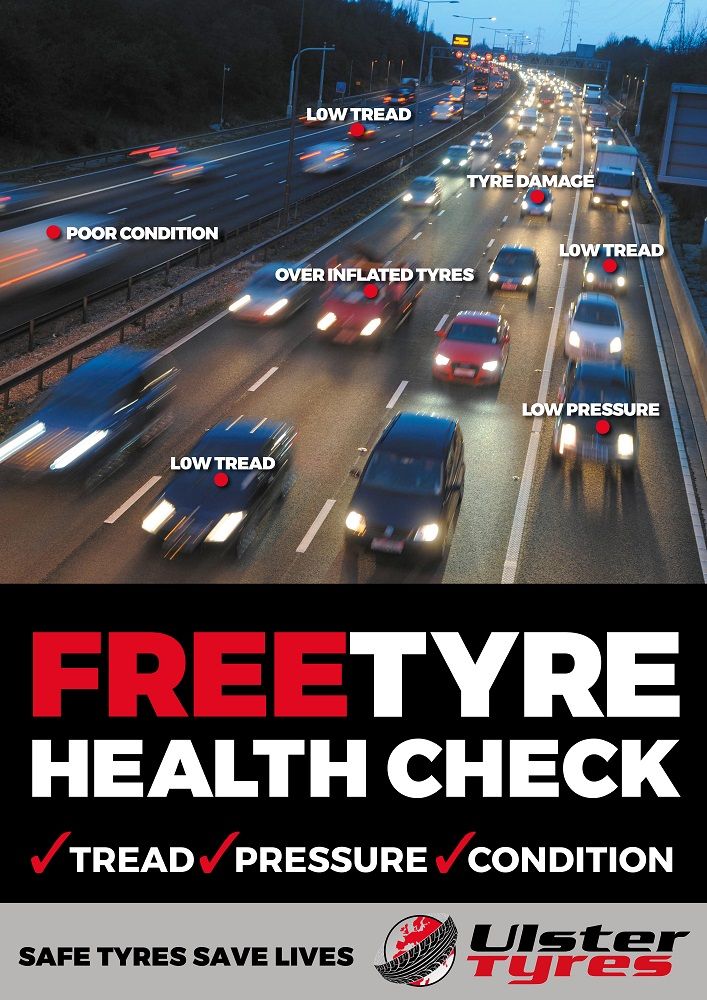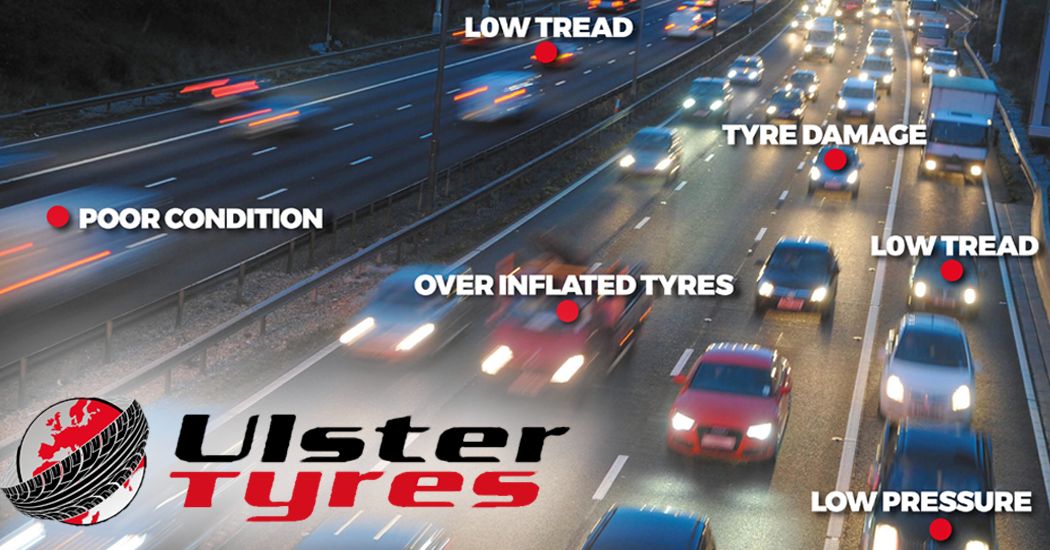This week, the Road Safety Authority (RSA) is hosting a week-long programme promoting road safety across Ireland. One of the key messages is regular tyre checks. After all, it’s the only part of your car connected to the road. But did you know, that the legal limit for tyres is 1.6mm?

Here’s Ulster Tyres’ quick guide to tyre safety will help keep you and your family safe on the road:
Tyre pressure and tread depth:
The legal minimum tread depth in Ireland is 1.6mm across a continuous band comprising the central three-quarters of the breadth of tread and round its entire circumference. Tyre treads are designed to give good grip on wet roads but in general wet grip decreases as the tyre tread depth approaches the legal minimum. Motorists should take this into consideration and reduce speed when driving in wet conditions. For the same reason motorists may wish to consider replacing tyres before the tread depth reaches the legal minimum
Having the correct wheel inflation levels is vital as your wheels need to support the weight of your car and also its passengers. Required tyre inflation varies from car model to car model, so you need to check your specific car manufacturer’s handbook. As the temperature drops, so does your tyre pressure. So, if you haven’t inflated your tyres over the last few months, there is a chance they have less pressure than you think.
Tyre age
Age is another critical factor when it comes to the health of your tyres. Tyres deteriorate naturally through exposure to heat, sunlight (Ultraviolet/UV), rain and general weathering. The process of the tyre degrading can depend on the amount of exposure and the severity of the weather. In everyday vehicles, tyres almost certainly will wear out before they degrade to such an extent they are unusable. Tyres more than 10 years old, including your spare tyres, should be replaced, even if they appear to be in good condition and above the legal tread wear limit of 1.6mm. Believe it or not, when a tyre has been in use, the effects of aging are lessened to a degree, so tyres that have been in storage should not be placed into use if more than six years old. So, remember to check the age of your tyres, and this can be found on the tyre sidewall, the serial number comprises of a four-digit code which refers to the tyre’s date of manufacture (the last two digits refer to the year of manufacture and the first two the week in that year e.g. 2017 is week 20 of 2017). Tyre aging increases the risk of tyre failure which may include a blow-out while being driven.
Pot Hole Abuse
Driving over pot-holes, kerbs, etc, even at low speed, can result in the weakening or fracture of the tyre’s inner structure. It may be dangerous to re-inflate a tyre which has been run flat or seriously under inflated and such tyres should be removed for comprehensive examination by a tyre specialist.
Tyres should be inspected at least monthly for punctures, cuts, bulges, cracking or any other abnormal visual indications. Particular attention should be paid to tyres that are used infrequently; for example as fitted to spare wheels, trailers, caravans and specialist or collector’s vehicles. Motorists should also be attentive to any unusual noise or vibration arising from the tyre whilst driving. If any degradation is found or suspected the consumer is strongly advised to have the tyre inspected as soon as practicable.
Stay tuned to Ulster Tyres Facebook page for top tips during Road Safety Week.
Tags:







